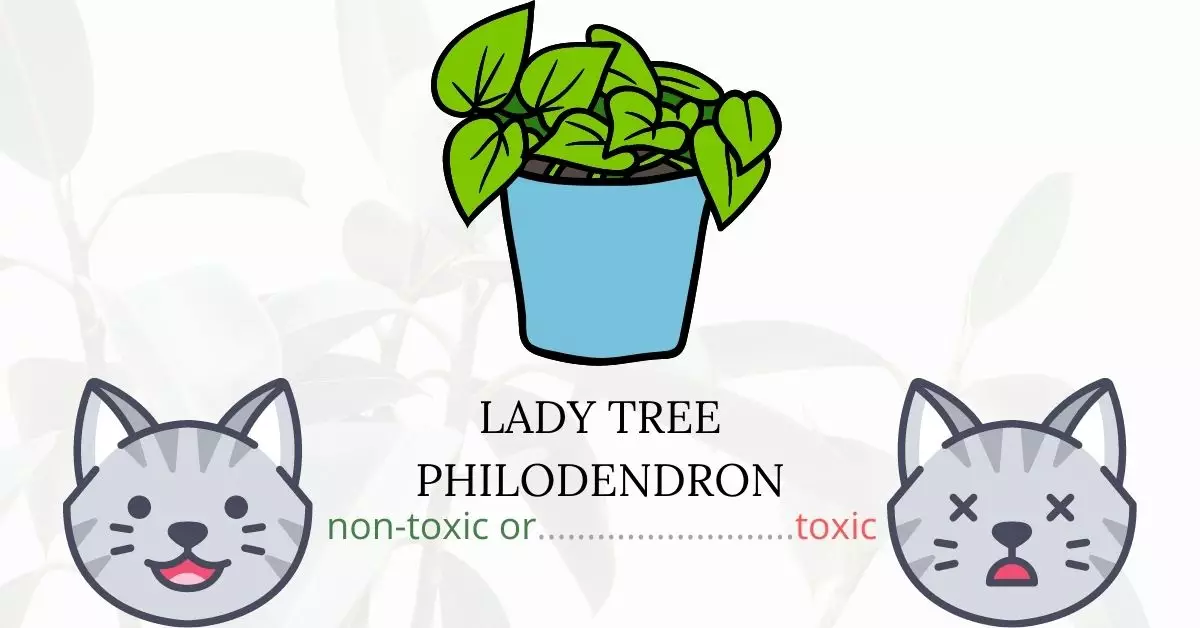Yes, the Lacy Tree Philodendron is indeed toxic to cats. This tropical Araceae plant contains insoluble calcium oxalates, compounds that can have harmful effects on cats when crushed or chewed, acting like microscopic needles that penetrate the tissues. For cats, any type of exposure—whether oral, ocular, or topical—poses a significant hazard. The consumption of any part of this plant can induce severe symptoms such as stomach discomfort, vomiting, diarrhea, blistering, and swelling.
This article is crafted with the contributions of a team of experienced Doctors of Veterinary Medicine (DVMs), ensuring the accuracy and reliability of the information provided. With their extensive knowledge and insights, we are able to deliver precise and current details on the potential risks that various plants, such as the Lacy Tree Philodendron, pose to cats. Furthermore, to corroborate our findings and present the most trustworthy information, we have conducted extensive research through high-authority websites including ASPCA and PetMD, reviewing each plant meticulously to ascertain its effects on cats. Through the combined expertise and rigorous research, we aim to offer a comprehensive understanding of the possible threats and to promote the well-being of pets.
Clinical Signs of Lacy Tree Philodendron Poisoning in Cats
When cats come into contact, ingest, or even smell parts of a Lacy Tree Philodendron plant, they may exhibit a variety of clinical signs due to the plant’s toxic components. The insoluble calcium oxalate crystals contained in the plant, when crushed or chewed, act like microscopic needles, causing a series of adverse reactions. Here’s a closer look at each clinical sign, its cause, and its manifestation:
- Oral Discomfort and Strong Burning Sensation: This occurs as the needle-shaped calcium oxalate crystals penetrate the oral tissues, causing immediate irritation and a burning feeling in the cat’s mouth. This reaction is a direct response to the physical damage and irritation caused by the crystals.
- Hypersalivation: The discomfort and irritation in the mouth trigger an increase in saliva production as the body’s natural response to soothe the affected area, resulting in excessive drooling or hypersalivation.
- Swelling of the Mouth and Throat: The penetration of the crystals in the tissues can lead to an inflammatory response, causing the mouth and throat to swell. This swelling is the body’s way of isolating the affected area and is often accompanied by pain and discomfort.
- Vomiting: Ingestion of the plant material can irritate the gastrointestinal tract due to the presence of calcium oxalate crystals, prompting the cat to vomit as the body attempts to expel the toxic substance.
- Swallowing Problems: The swelling and inflammation in the mouth and throat can hinder normal swallowing, making it painful and difficult for the cat to ingest food or liquids.
- Breathing Problems: The swelling of the throat may also obstruct the airway, leading to difficulty in breathing, a potentially life-threatening situation if not addressed promptly.
Most cats, due to the immediate bitter taste and the intense pain experienced upon chewing the plant, will refrain from consuming large quantities of Philodendron. Nonetheless, acute oropharyngeal pain due to contact with the calcium oxalate crystals is the most common symptom and requires immediate attention to prevent further complications.
First Aid and Treatment of Lacy Tree Philodendron Poisoning in Cats
Treatment for calcium oxalate ingestion can usually be done at home. If your cat has consumed a part of the lacy tree philodendron, the mouth should be thoroughly cleaned and cleansed with water. Pain can be relieved by precipitating some of the calcium oxalate crystals, the animal can be given yogurt, milk, cheese, or any other calcium source.
If you cat is experiencing severe gastrointestinal upset, such as chronic vomiting and diarrhea, or swelling and breathing difficulties, he or she should brought to a veterinarian for appropriate treatment. Antihistamines, such as diphenhydramine, may be prescribed by the vet as a prophylactic step or in cases when there is visible oral swelling. This medication will aid in reducing or preventing swelling, pain, and potential airway obstructions caused by the cat’s inflammatory reaction.
Recovery from Lacy Tree Philodendron Poisoning in Cats
Typical recovery of cats from lacy tree philodendron poisoning usually takes 12 to 24 hours after ingestion. Once you are home, give your cat time to rest comfortably to regain strength. Soon, he or she will be back to usual routines.
Prevention of Lacy Tree Philodendron Poisoning in Cats
Keep your cat away from lacy tree philodendrons by removing these plants in your yards. If your cat was exposed to this plant outdoors, it is best to keep him or her inside your home and restrict his or her access outdoors. Planting cat-friendly plants as an alternative is also a great way to prevent poisoning.
If you love plants but have cats at home, check out these lists:





